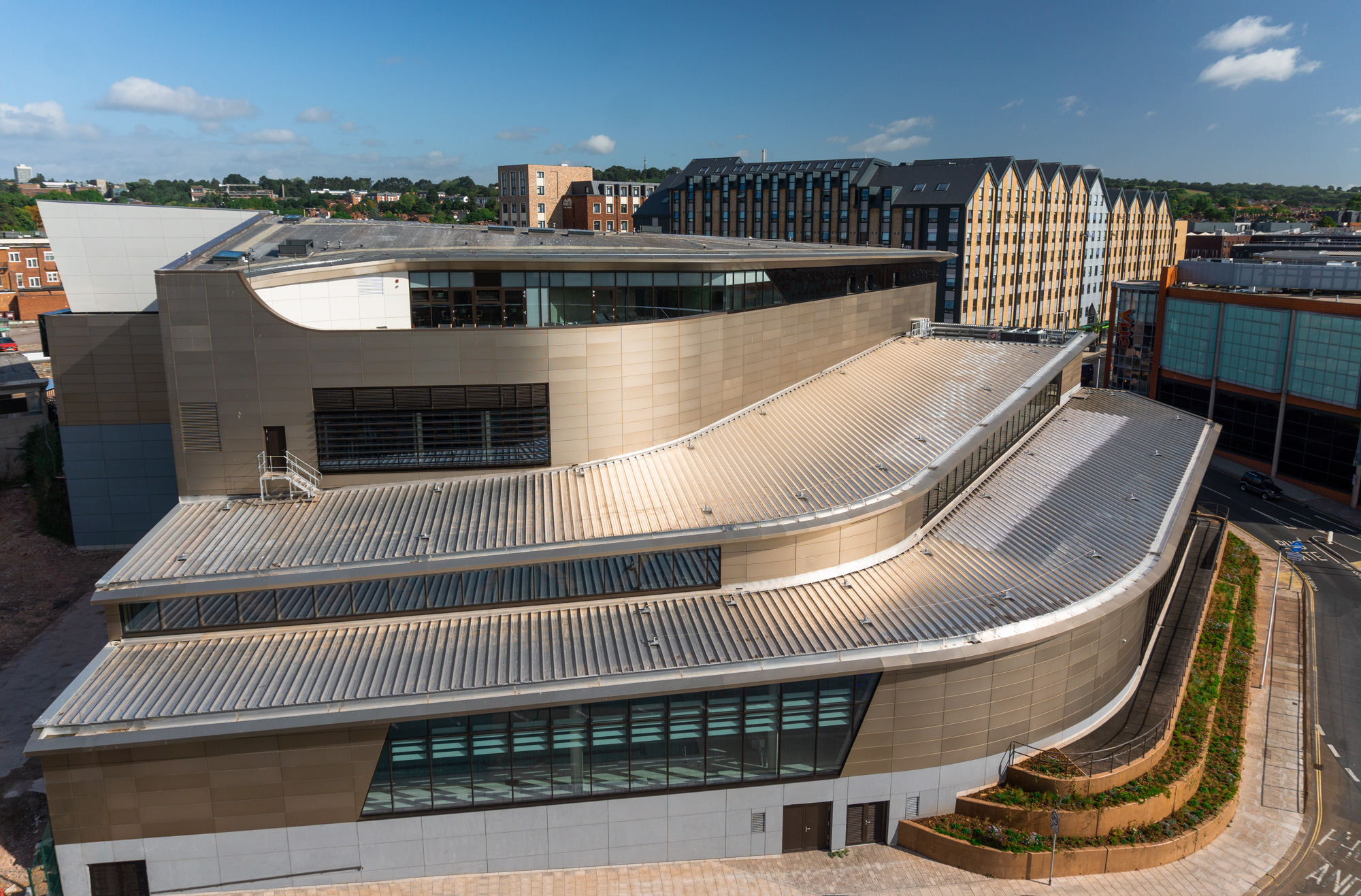
A Passivhaus World First
Exeter City Council has been constructing buildings to Passivhaus standards for nearly a decade. Committed to its carbon net zero target by 2030, ambitions soon moved from housing to leisure. In 2015, the Council approached SPACE&PLACE (S&P) to design and develop a leisure centre that would meet Passivhaus standards while simultaneously serving the health and wellbeing needs of the city.
Opened in 2022, St. Sidwell’s Point Leisure Centre is the first multizonal Passivhaus sports centre in the world. Located in the city centre and spread over 5 floors, it acts as a beacon of social and environmental excellence. St, Sidwell’s point features an eight lane, 25m competition pool, a 20x8m community pool, children’s plash pool, 700sqm gym, 2 studios, play zone, café and spectator seating area. In addition to the more conventional leisure facilities, St. Sidwell’s Point also boasts a health spa, spa pool, heat experiences, four treatment rooms, a relaxation area and a roof terrace.

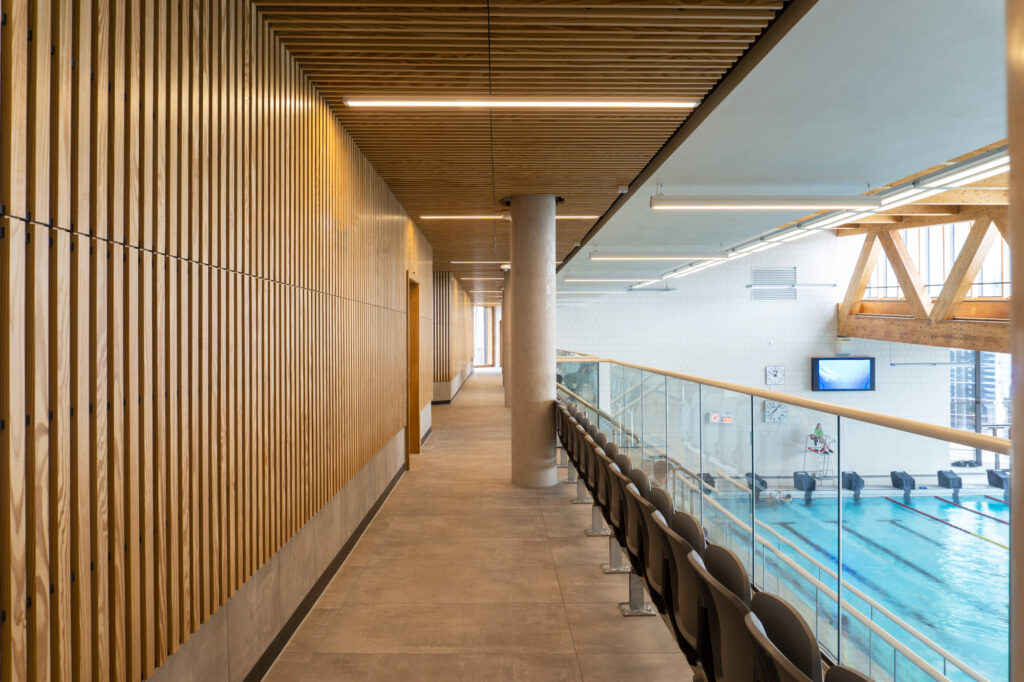
Innovation in Design
The design of St. Sidwell’s Point has been an innovation journey. Initially focused on the exterior envelope, Nic Bryant in collaboration with other subject matter experts, worked to eliminate any ‘cold bridges’, increase the insulation and improve the airtightness of the building. Utilising triple glazing, thermal zoning and insulated internal walls, use of tepid spaces and clever orientation to take advantage of natural thermal properties, are just some of the design choices that were made to ensure the high environmental performance of the facility.
The complex design process had to work hard to achieve the Passivhaus standards and work efficiently to support the demands of the consumer, flowing like a conventional leisure centre and delivering an outstanding customer journey. Consumers will note the high-quality materials used in the construction, the quality of air and temperature and purposeful flow through the building that combines functionality and beautiful interior design.
Exceeding Energy Targets
Significantly larger than other facilities in the Exeter City Council estate, the energy usage is notably lower with an approximately 73% reduction on the next largest facility.
Nic Bryant, lead architect on the project explains ‘one of the key measures in Passivhaus design is the energy use per square meter of a building. For St. Sidwell’s Point, the Passivhaus Institute set a target of 367kWh per square meter per year. In year one of operation, the building achieved 305kWh per square meter, outperforming the target by 20%.
Another important aspect of Passivhaus includes air tightness. The Institute set an initial target for St. Sidwell’s Point at 0.45 cubic meters per hour (the amount of air that can be let out of the building every hour per square meter), against a typical target of 3 cubic meters. Impressively, St. Sidwell’s Point has achieved an air tightness of just 0.2 cubic meters per hour.
U-values are another Passivhaus measure to be factored in. Relating to the thermal performance of the building, the lower the U-value, the better insulated the building. Current building regulations specify a U-value of 0.18W/m2 K whilst older buildings will typically come in around 0.35W/m2 K. St. Sidwell’s Point again overachieves with the U-value of the roof recording 0.09 W/m2 K.
Certified by the Passivhaus Institute in Germany the building has in many cases outperformed initial targets. Despite the already impressive overperformance of the building, S&P in collaboration with the Passivhaus Institute, believe that further efficiencies can be made and will be explored over time.
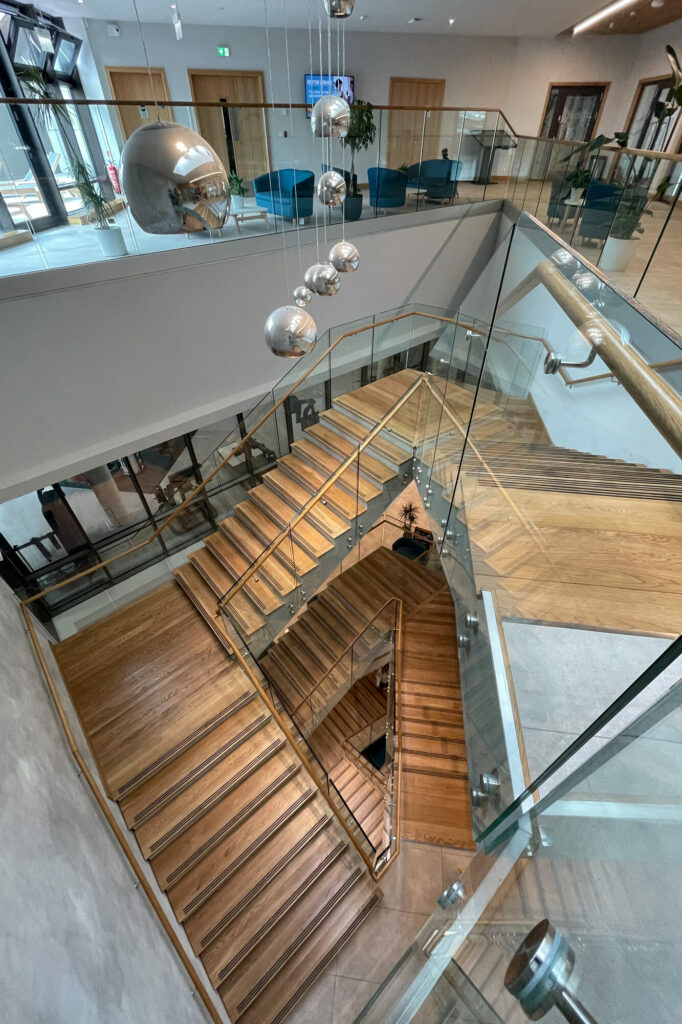
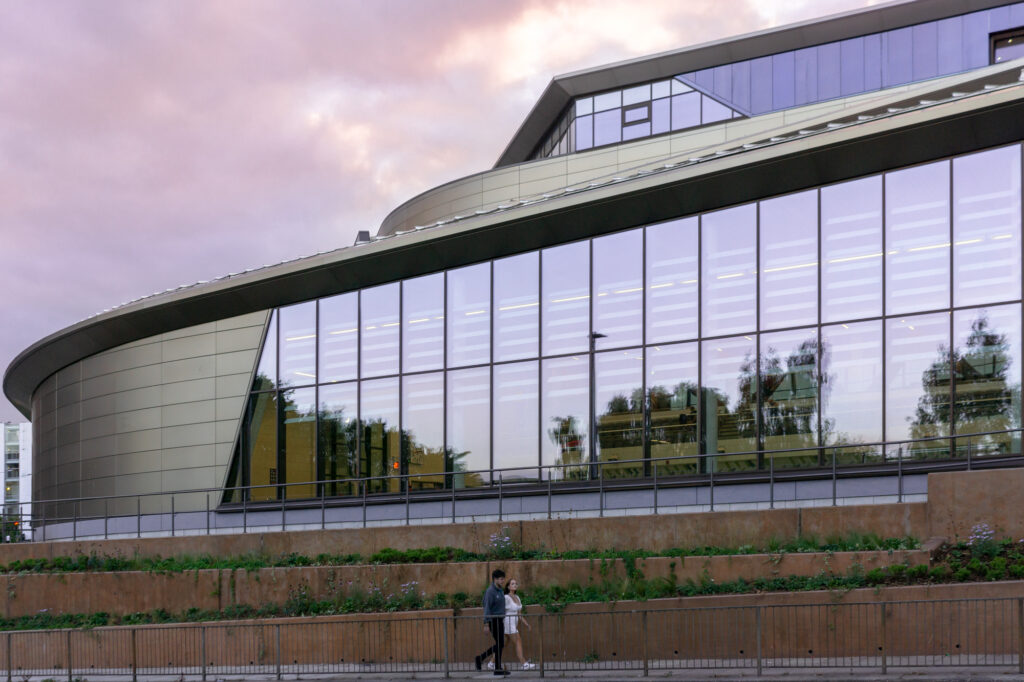
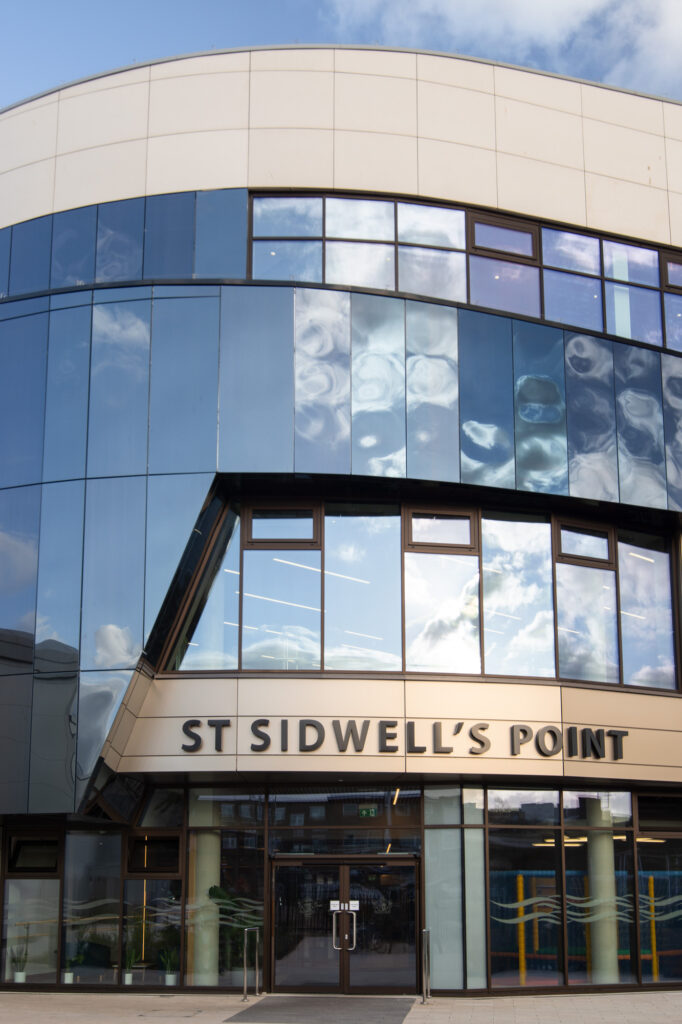
Building for the Future
As environmental sustainability grows in importance and Local Authorities continue to invest in their estates, the need for long term sustainable solutions is paramount. Passivhaus technology is gaining momentum as a solution to rising energy costs and the need to deliver more for less. Despite the larger initial capital costs, the longer term returns far out way the outlay. S&P have several new Passivhaus projects in the pipeline, each set to improve as new learnings are gained from each development.
Following the completion of St. Sidwell’s Point, Nic Bryant has shared his observations for future developments. ‘I believe we must be more selective in our choice of locations, taking advantage of spaces near data centres, power stations and retail locations with large refrigeration units so as to take advantage of huge heat emissions; further reducing the cost of operating our leisure stock. There is an opportunity for Councils to be savvy, taking a helicopter view of their energy usage as a whole, to inform their capital investment programmes’.
S&P continue to push the boundaries of design and innovation, committed to its purpose of designing spaces and places for human beings.